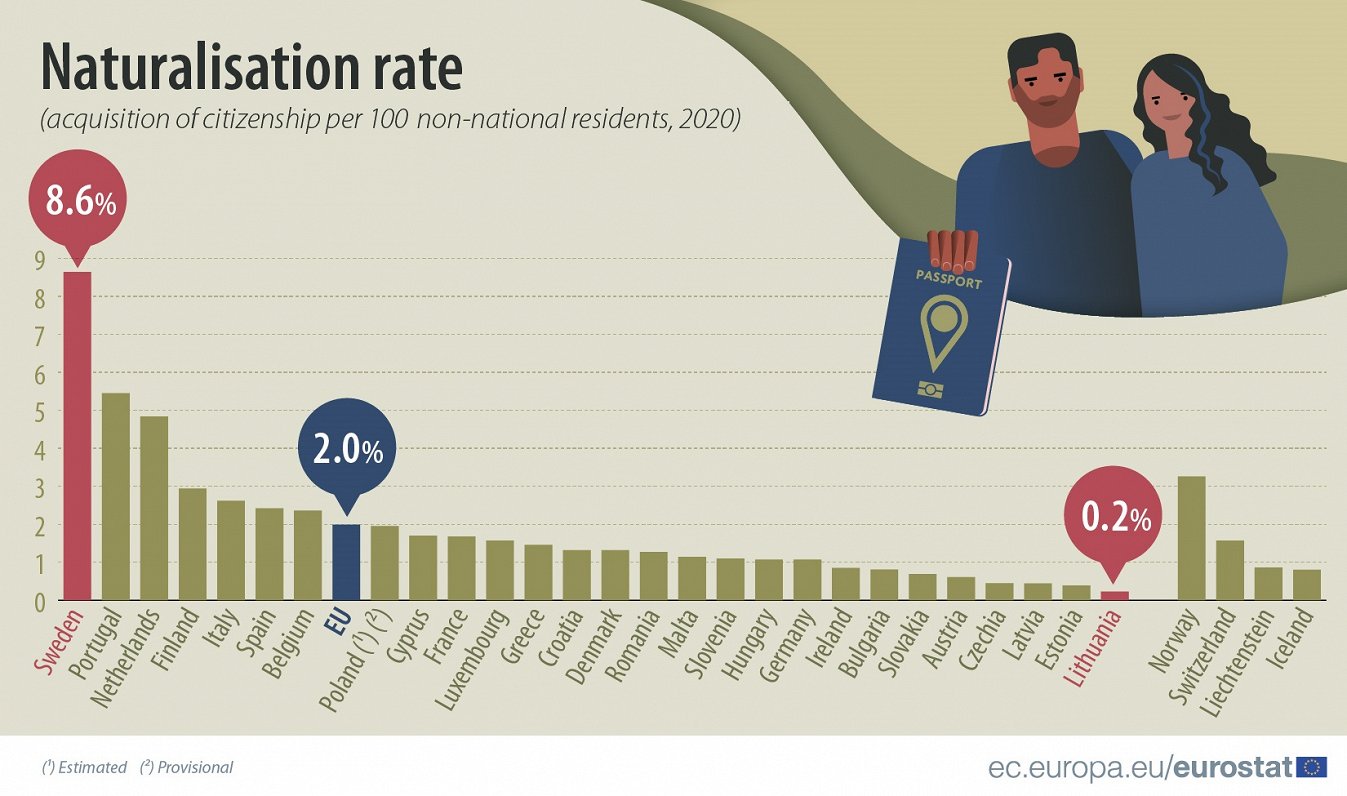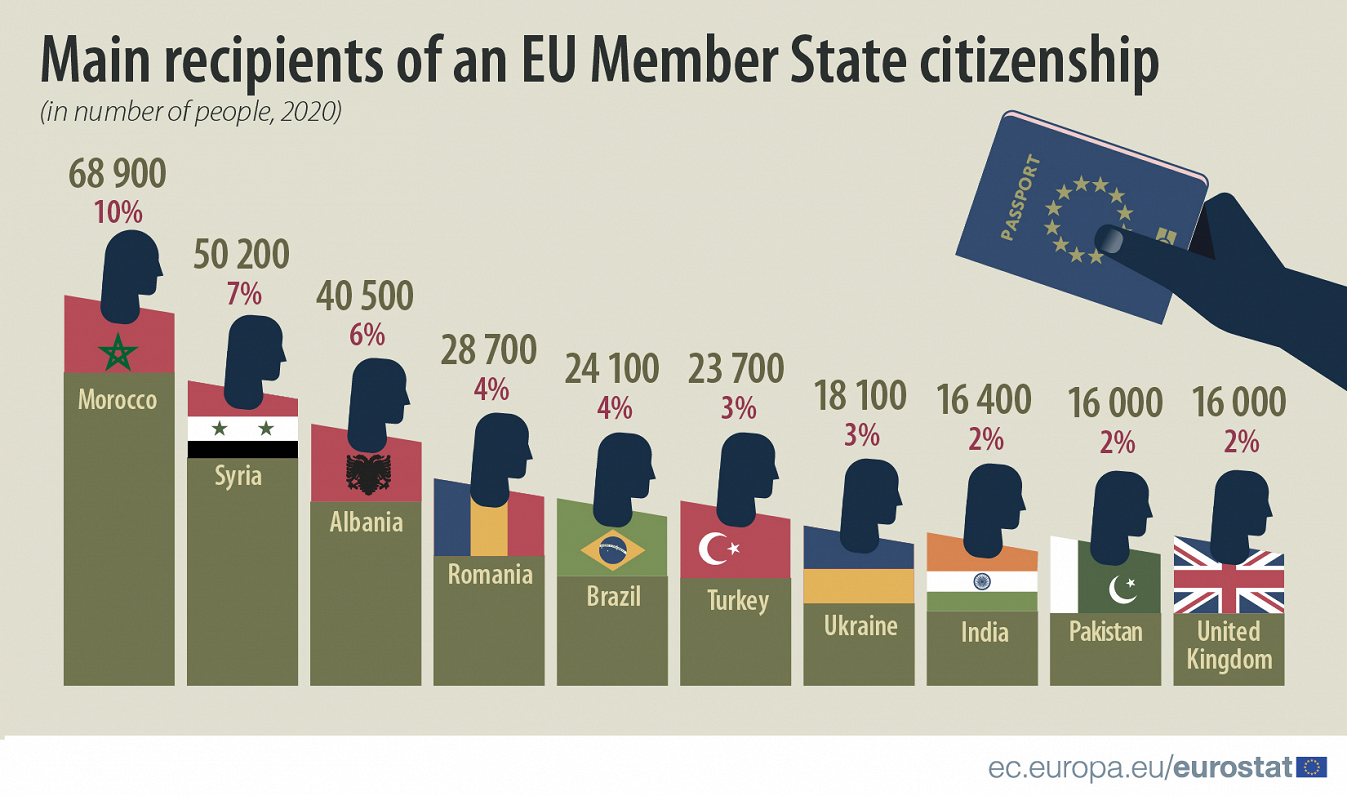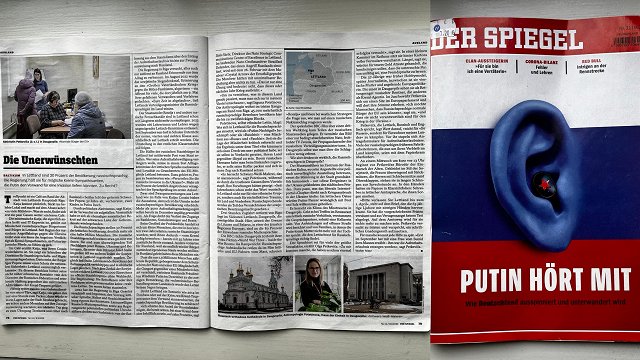The naturalisation rate is the ratio of the number of persons who acquired the citizenship of a country during a year over the stock of non-national residents in the same country at the beginning of the year.

In 2020, the highest naturalisation rates were registered in Sweden (8.6 citizenships granted per 100 resident non-nationals), Portugal (5.5), and the Netherlands (4.8), followed by Finland (2.9), Italy (2.6), Spain and Belgium (both 2.4).
At the opposite end of the scale, naturalisation rates below 1 citizenship acquisition per 100 resident non-nationals were recorded in Lithuania (0.2), Estonia (0.4), Latvia (0.4), Czechia (0.5), Austria (0.6), Slovakia (0.7), Bulgaria (0.8) and Ireland (0.9). In total Latvia granted citizenship to 1,100 people.
The data showa an interesting spread of people acquiring Latvian citizenship with significant totals of Germans, Lithuanians, Irish and Poles among citizens of other EU states. Among those classed as non-EU citizens, more than 70% of those acquiring Latvian citizenship in 2020 were previously classed as "non-citizens", 12% were Russian citizens and nearly 7% were British citizens, with US citizens next on just over 2%.

In 2020, 729 000 people acquired citizenship of an EU Member State where they lived, a 3% increase from 706 400 in 2019. This increase was mainly due to the increases recorded in Spain (+27 300 Spanish citizenships granted than in 2019), followed by the Netherlands (+21 800), Sweden (+16 000), and Portugal (+11 000).
In contrast, the largest decreases in absolute terms were observed in France (-23 300 French citizenships granted compared with 2019), followed by Germany (-20 800), Belgium (-6 700), and Romania (-4 000).
As in 2019, the majority (85%) of those who obtained the citizenship of an EU Member State in 2020 were previously citizens of a non-EU country or stateless. Former citizens of another EU Member State accounted for 13% of the total number of citizenships acquired.
You can explore the data more fully in Eurostat's detailed Statistics Explained article.

In 2020, Moroccans were the largest group among new EU-citizens (68 900 people, of whom 86% acquired citizenship of Spain, Italy or France), ahead of Syrians (50 200, 49% acquired citizenship of Sweden), Albanians (40 500, 70% acquired citizenship of Italy), Romanians (28 700, 40% acquired citizenship of Italy), Brazilians (24 100, 72% acquired citizenship of Italy or Portugal), Turks (23 700, 49% acquired German citizenship), Ukrainians (18 100, 48% acquired citizenship of Poland, Germany or Italy), Indians (16 400, 34% acquired citizenship of Italy), Pakistanis (16 000, 35% acquired citizenship of Italy) and Britons (16 000, 60% acquired citizenship of Germany, France or Sweden).
Romanians (28 700 persons), Poles (12 500) and Italians (8 200) remained the three largest groups of EU citizens acquiring citizenship of another EU Member State, the same as in 2018 and 2019.
Most new citizenships were granted by Italy (131 800 or 18%), Spain (126 300 or 17%), Germany (111 200 or 15% of the EU total), France (86 500 or 12%), and Sweden (80 200 or 11%) accounting for 73% of new citizenships granted in the EU in 2020.





























